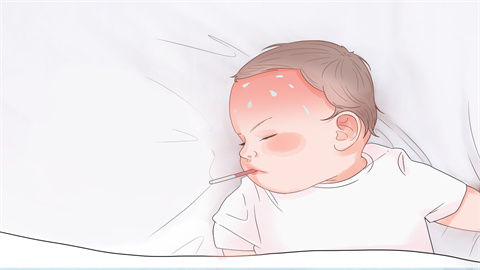What to do about low-grade fever in children with pneumonia
Generally speaking, low-grade fever refers to a mild fever. Low-grade fever in children with pneumonia may be caused by reasons such as an immature body temperature regulation center, medication effects, viral pneumonia, bacterial pneumonia, or mycoplasma pneumonia. Treatment can be administered under a doctor's guidance using general treatments, medications, and other methods. A detailed analysis is as follows:

1. Immature Thermoregulatory Center
Children's thermoregulatory centers are not fully developed, so their ability to regulate environmental temperature changes and heat produced by internal metabolism is limited, making body temperature prone to fluctuation. The indoor temperature should be kept suitable to avoid overheating or chilling the child. Dress the child appropriately and adjust clothing according to weather changes.
2. Medication Effects
Certain antibiotics or antiviral drugs used to treat pneumonia might cause temporary dysfunction of the thermoregulatory center, leading to temperature fluctuations, including low-grade fever. It is recommended to follow medical advice when taking medications, monitor for side effects, and adjust the treatment plan promptly if necessary.
3. Viral Pneumonia
Viral pneumonia is caused by infections such as influenza virus, adenovirus, etc. Viral replication leads to lung inflammation, and the immune response causes low-grade fever. Symptoms may also include cough, runny nose, and others. Under a doctor's guidance, medications such as oseltamivir phosphate granules, Xiao'er Feire Kechuan oral liquid, and paracetamol oral solution can be used for treatment.
4. Bacterial Pneumonia
Bacterial pneumonia is caused by bacterial infections such as Streptococcus pneumoniae, Staphylococcus aureus, etc. Bacterial proliferation causes lung inflammation, and the inflammatory response leads to low-grade fever. Symptoms may also include sputum production, chest pain, and others. Patients can follow medical advice to use medications such as cefaclor granules, amoxicillin-clavulanate potassium granules, ambroxol hydrochloride oral solution, and others for treatment.
5. Mycoplasma Pneumonia
Mycoplasma pneumonia is caused by mycoplasma infection, which may lead to lung inflammation. Immune responses and inflammatory mediators released during infection can cause low-grade fever. Patients may also experience paroxysmal, irritating dry cough, fatigue, headache, and other symptoms. Under a doctor's recommendation, medications such as azithromycin granules, montelukast sodium chewable tablets, thymopeptide enteric-coated tablets, and others can be used for treatment.
Maintain good indoor air circulation by regularly opening windows to ensure fresh air and reduce the growth of bacteria and viruses. At the same time, avoid contact between children and individuals showing symptoms of colds, encourage frequent handwashing, and use masks to reduce the risk of infection.





